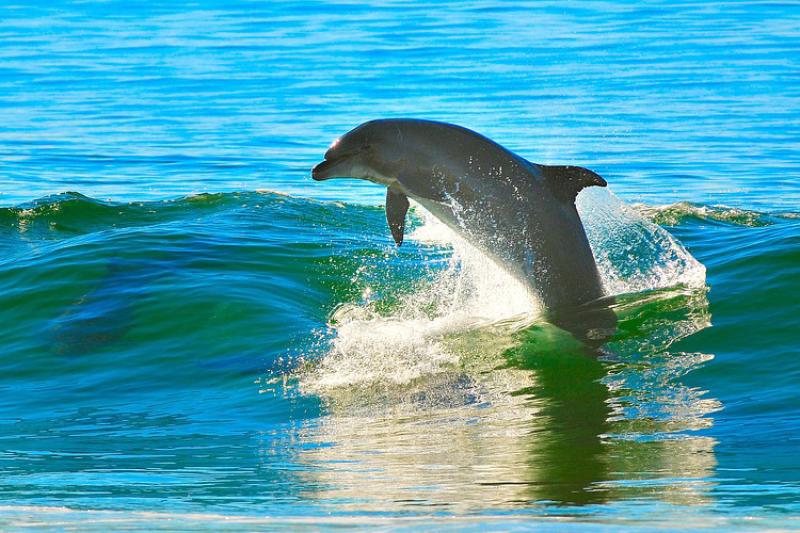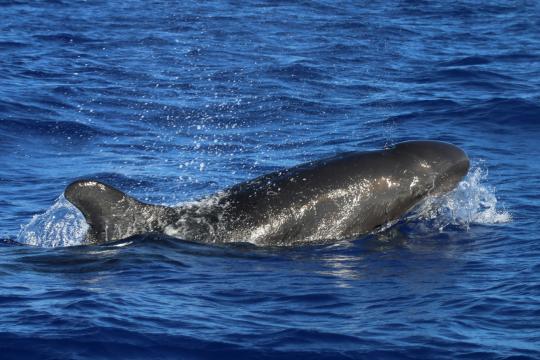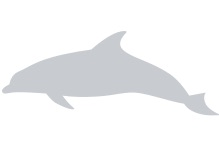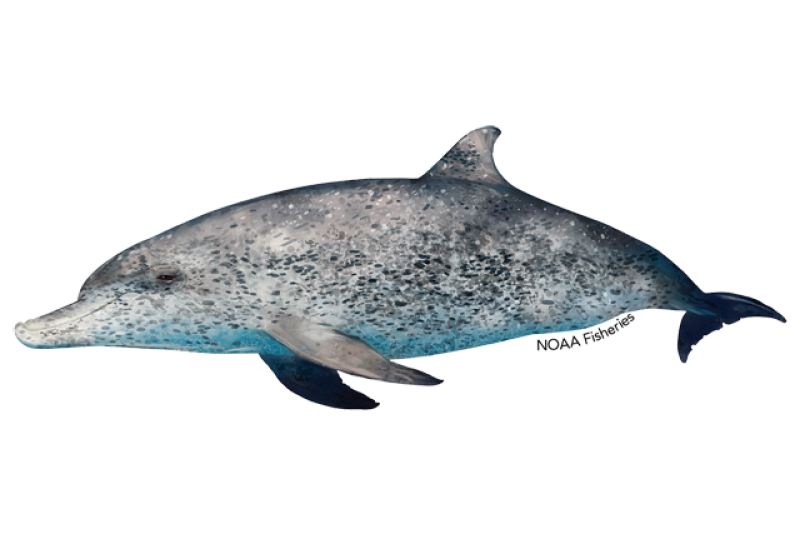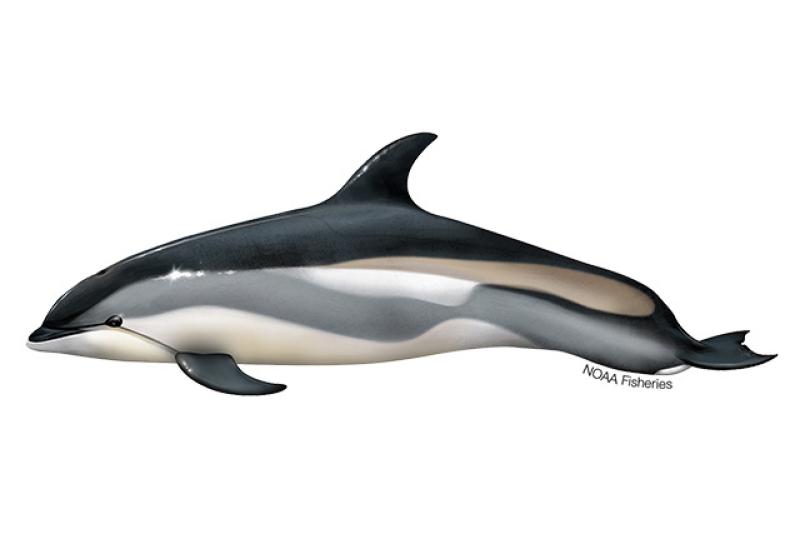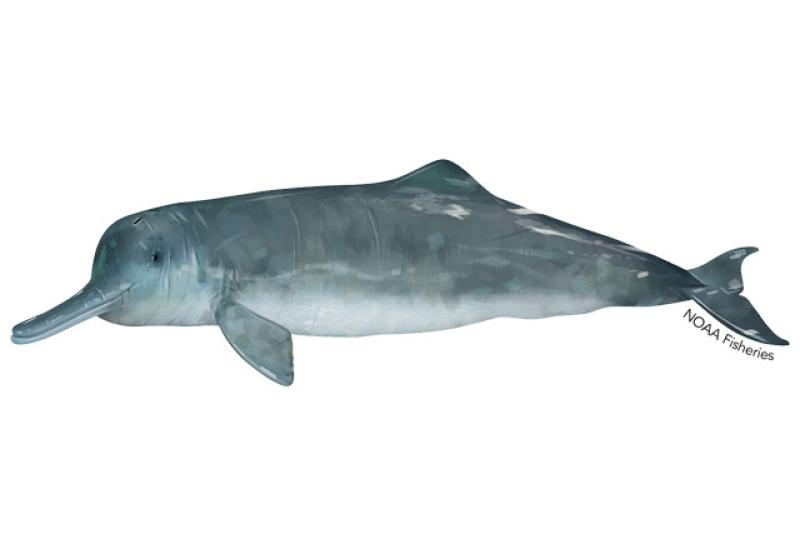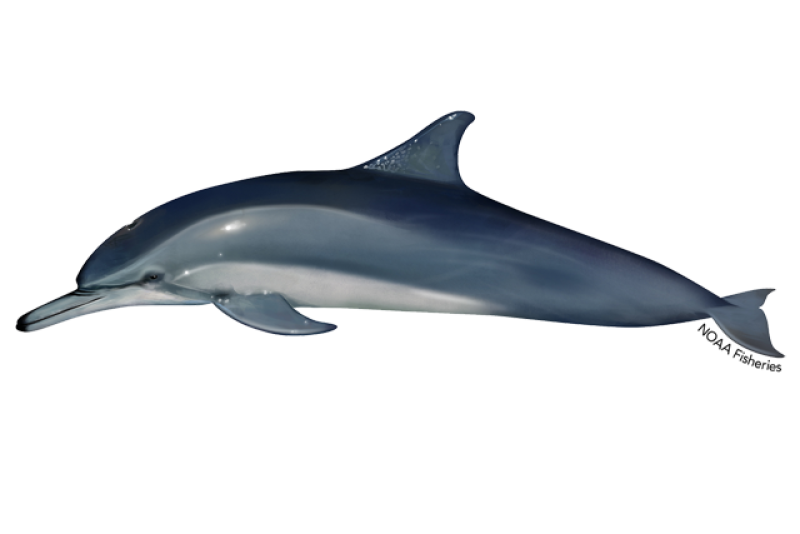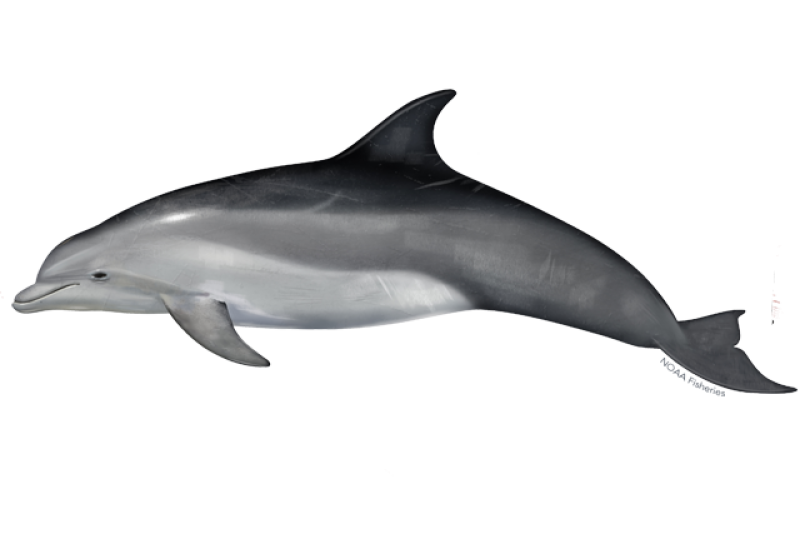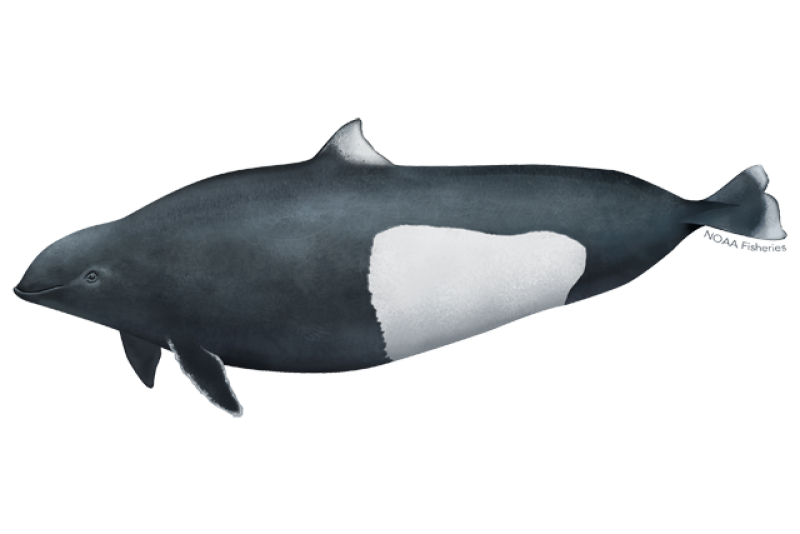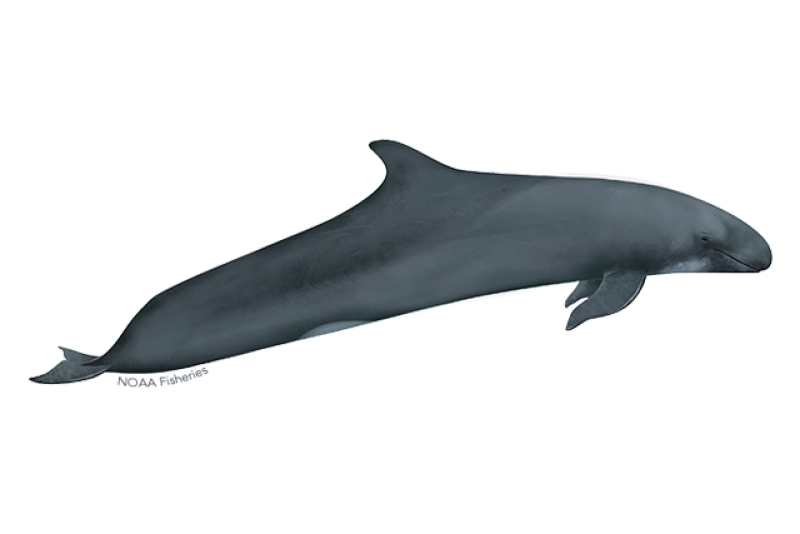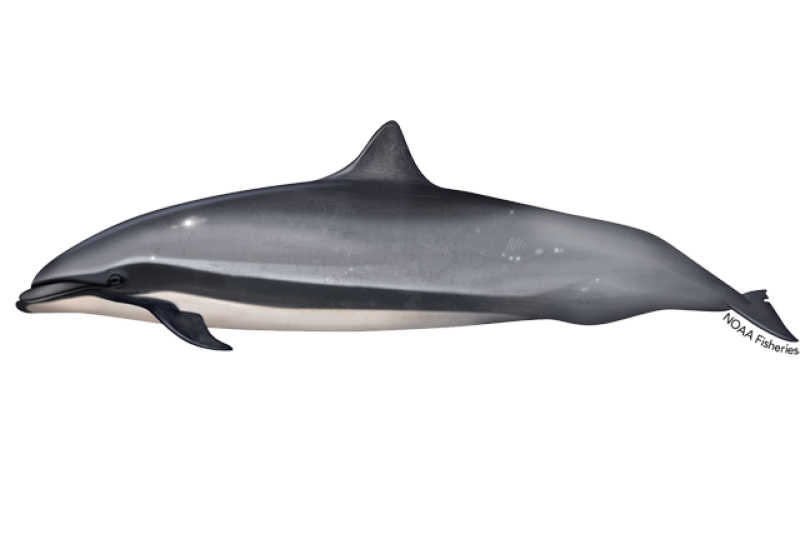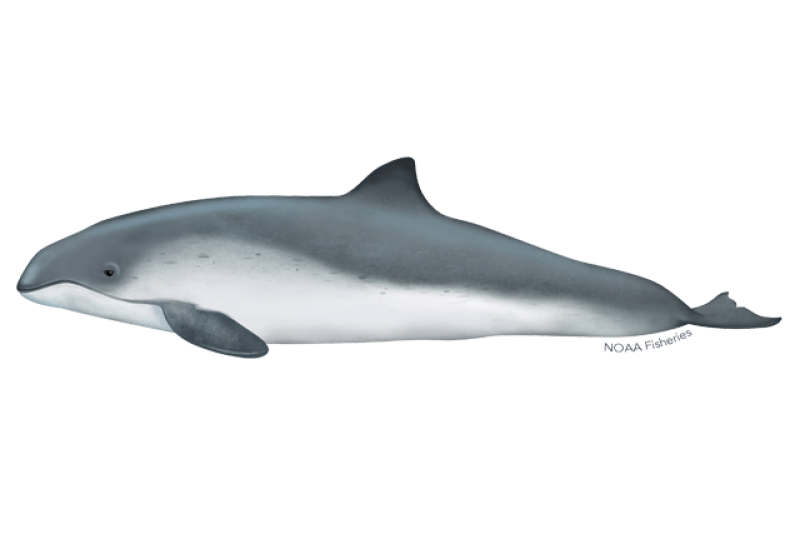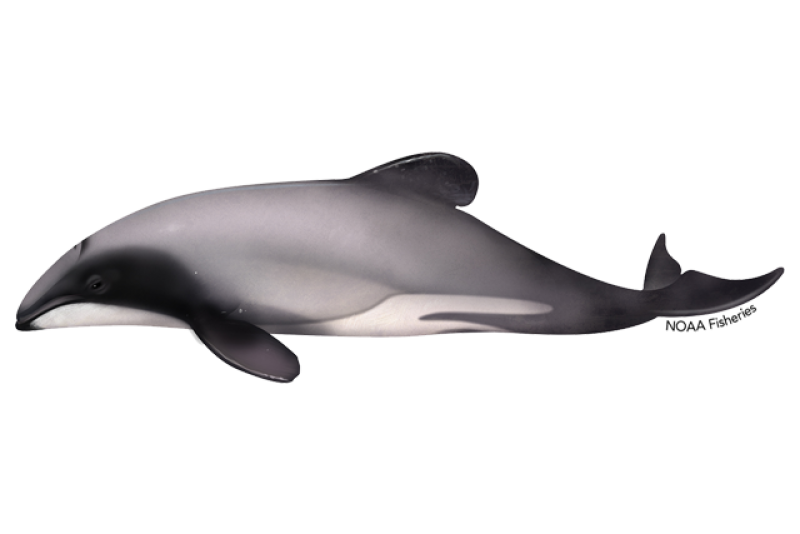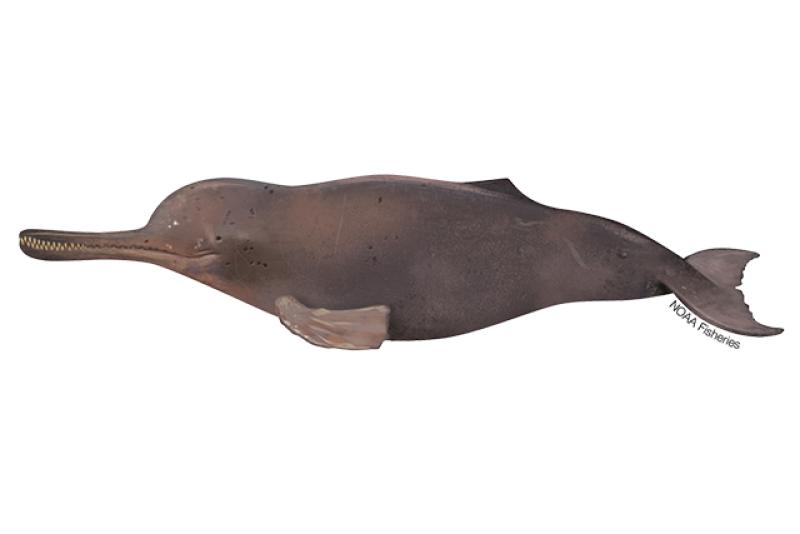Dolphins and porpoises are at the top of the food chain and play an important role in the overall balance of the marine environment. They belong to a group of marine mammals called cetaceans. Marine mammals in the cetacean family include whales, dolphins, and porpoises. These animals are often referred to as “sentinels” of ocean health providing insight into marine ecosystem dynamics. Numerous studies have explored the effects of noise and chemical pollution, habitat degradation, and changes in climate on these animals.
Dolphins and porpoises tend to be social and live in groups. They exhibit complex methods of communication and echolocation making squeaks, buzzes, whistles, and clicks that can be heard from miles away. They are also thought to communicate by slapping the water’s surface with their tails or bodies. They range in size from the small, critically endangered vaquita porpoise to the iconic killer whale—the largest member of the Delphinidae, or dolphin family.
All dolphins and porpoises are protected under the Marine Mammal Protection Act, and some are also listed under the Endangered Species Act. Together with our partners, we work to study, protect, and conserve these fascinating species and their habitats.
Species News
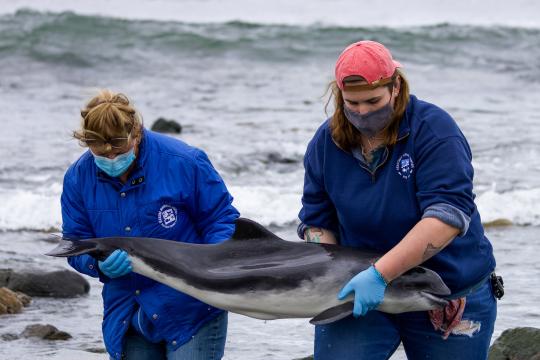 A harbor porpoise is retrieved from the rocks at Odiorne Point State Park, New Hampshire. Credit: Seacoast Science Center
A harbor porpoise is retrieved from the rocks at Odiorne Point State Park, New Hampshire. Credit: Seacoast Science Center
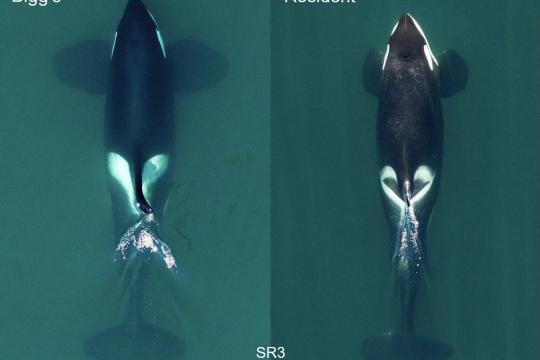 Aerial images comparing the sizes of adult male Bigg’s and Resident killer whales, both taken in the Salish Sea off southern Vancouver Island. Images are scaled to lengths calculated during health research by SR3 SeaLife Response, Rehabilitation and Research. Images were collected by John Durban and Holly Fearnbach using a non-invasive drone authorized by research permit 19091 issued by the US National Marine Fisheries Service (NMFS).
Aerial images comparing the sizes of adult male Bigg’s and Resident killer whales, both taken in the Salish Sea off southern Vancouver Island. Images are scaled to lengths calculated during health research by SR3 SeaLife Response, Rehabilitation and Research. Images were collected by John Durban and Holly Fearnbach using a non-invasive drone authorized by research permit 19091 issued by the US National Marine Fisheries Service (NMFS).
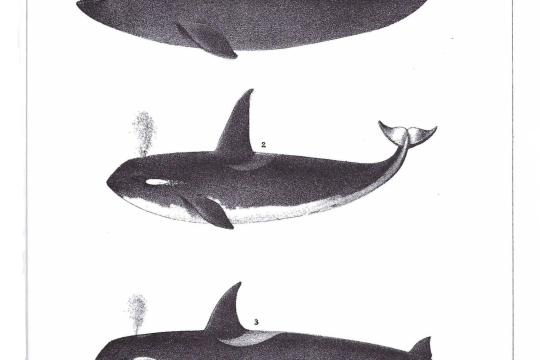 California whaler Charles Melville Scammon first described the killer whales of the West Coast, and documented his observations and findings in a manuscript he sent to the Smithsonian Institution.
California whaler Charles Melville Scammon first described the killer whales of the West Coast, and documented his observations and findings in a manuscript he sent to the Smithsonian Institution.
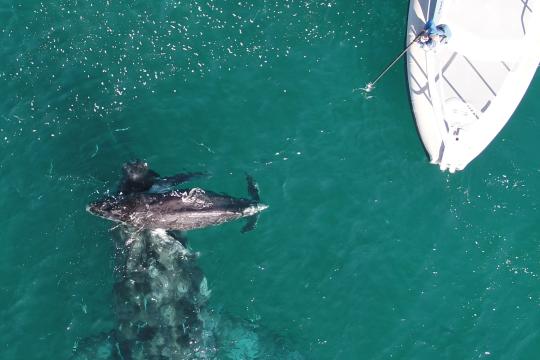 NOAA researchers with the Hawaiian Islands Humpback National Marine Sanctuary assess an injured humpback whale calf off of Maui. The calf had suspected vessel strike injuries to its tail. Credit: Pacific Whale Foundation (NOAA Fisheries Permit #24359)
NOAA researchers with the Hawaiian Islands Humpback National Marine Sanctuary assess an injured humpback whale calf off of Maui. The calf had suspected vessel strike injuries to its tail. Credit: Pacific Whale Foundation (NOAA Fisheries Permit #24359)
Multimedia
 Humpback whales swimming underwater. Credit: Kogia.org
Humpback whales swimming underwater. Credit: Kogia.org
Research
Publications by Northeast Passive Acoustics Branch Staff
We regularly publish their findings in scientific journals and Center-produced documents.
Common Bottlenose Dolphin Ecotypes of the Western North Atlantic Revisited
Research proposing the recognition of a distinct species of coastal bottlenose dolphin.
Common bottlenose dolphin (Tursiops truncatus) abundance and distribution patterns in St Andrew Bay, Florida, USA
The goals of this study were to conduct photographic‐identification surveys during 2015 and 2016 to…
Population Consequences of the Deepwater Horizon Oil Spill on Pelagic Cetaceans
We quantified population consequences for pelagic cetaceans, including sperm whales, beaked whales,…
Understanding Sound in the Ocean
Levels of underwater noise from human activities—including from ships, sonar, and drilling—have increased dramatically.
